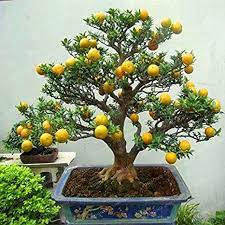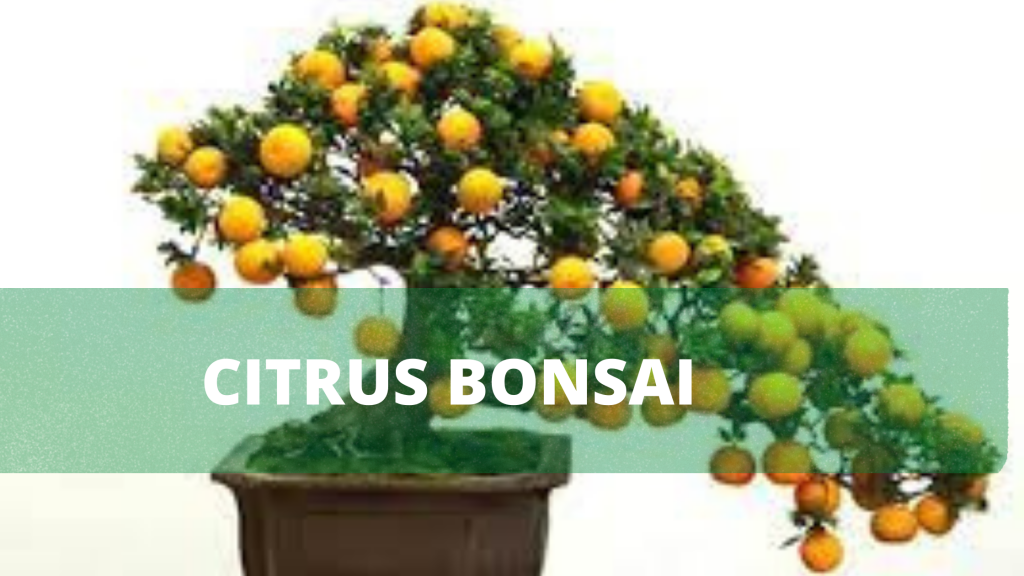The Ultimate Guide For Fresh Tasting Citrus Bonsai
Citrus bonsai is a type of tree that can be grown in small containers. They are often used as decoration because they are small and produce fruit like normal citrus trees, but can also be great for cooking with. If you’re interested in growing your own citrus bonsai, the process isn’t difficult!
Sally loves cooking with citrus fruits. But living in an apartment in the West District in New York, she didn’t have access to a backyard where she could grow orange or lemon trees.
She thought she was doomed to having to buy her citrus from the local greengrocer. Sally was happy to support local business but she wasn’t sure what chemicals or pesticides had been used on the citrus trees before the fruit landed at the shop.
Sally did some research which forms the basis of this article.
In this blog article we’ll explore:
1. What is a citrus bonsai
2. Why you should have one
3. How to care for it
4. The best varieties of citrus trees
5. Where to buy this type of bonsai
6. Citrus bonsai FAQs
What is a citrus bonsai?

The citrus bonsai is a specific type of tree that can be grown in containers and produces fruit. This allows the tree to retain some of the properties of normal citrus trees.
These include good-smelling flowers and edible fruit, but it also has some unique benefits that make it stand out among other types of bonsai trees as we’ll discuss below.
Citrus trees are known for being extremely low-maintenance. This makes them a good choice for beginner bonsai growers, who can feel overwhelmed by more challenging plants.
The size of the tree is also very small, which means it’s suitable to grow indoors in a smaller house or apartment where you might not have enough space for a larger plant. For this reason, citrus bonsai trees are a good choice for dorm rooms or other places where you might not have a lot of room to work with.
Why do I need a citrus bonsai?
Citrus minitures are unique among other types of bonsai trees because it has the benefits of live flora, but it can also produce delicious fruit. This makes them a great choice for anyone who wants to grow their own food, because they will always have a supply of fresh oranges or grapefruits ready to pick at any time!
How to care for a citrus bonsai
Caring for a citrus is actually very straightforward. This makes it a good choice for beginners, and particularly people who want to learn everything about bonsai care without worrying too much about specific challenges:
Potted Citrus Bonsai – Basic Care Guide
Keep tree in bright, indirect sunlight – your tree should not be in a place that receives full, direct sunlight. If fruit is not produced, you should move the pot to a brighter location.
Fertilize tree monthly during spring and summer
Citrus trees have a lot of natural fertilizer stored in the leaves, so it doesn’t need too much added from outside sources. This means you don’t have to worry too much about over-fertilizing your plant!
Water tree once a week
In summer, you can skip a week if the soil is moist. In winter, water every 3-4 days during warm weather and once a day in cooler weather.
Citrus bonsai FAQs
How long does it take for a citrus treeto be ready for harvest?

In general, most citrus trees will produce fruit within 3-5 years. This can vary depending on the specific variety of tree and how frequently it has been harvested in the past, but you should get a crop from most plants after this period.
What is the best variety of citrus bonsai?
Citrus trees are often sold by their fruit-producing abilities, instead of the type of tree they originated from. This means that you can find many different types available for sale, even though some are more common than others:
The best variety of citrus is one that is able to produce fruit in a short period of time, as this will allow you to enjoy the fruit more quickly. Most types of citrus bonsai trees sold at nurseries are hybrids that have been developed for faster production times.
Can I eat the fruit from a citrus mini tree?
Yes! One of the main reasons people choose to grow citrus bonsai is because they can eat the fruit that it produces. Many citrus plants produce larger fruits than you would normally see on other types of trees, and they also take fewer years before they first yield fruit.
How can I increase the yield of my citrus bonsai tree?
There are a few different things that you can do to increase the amount of fruit your tree produces. These include:
Pruning the roots – Citrus trees need deep soil to produce fruit correctly, so make sure they have plenty of room to grow! If your plant is producing very small fruits or none at all, you should prune the roots to allow the tree to spread out.
Watering – Citrus trees need a lot of water to produce fruit, so make sure you aren’t letting your plant dry out! You can check this by feeling the soil – if it is not moist throughout, the plant needs more water.
Location – Place your citrus bonsai in a location where it will get consistent sunlight, but not too much direct heat. The best temperature range for citrus trees is between 50 and 90 degrees Fahrenheit.
What kind of soil should I use?
Citrus bonsais do best with a soil made from 1/3 composted organic material, 1/3 coarse sand, and 1/3 peat moss. This will help your soil retain moisture while still allowing proper drainage. You can adjust these ratios depending on how frequently you plan to water the tree.
Sould i spray a pesticide on a citrus?
Citrus bonsais are very hardy plants that do not usually need any kind of pesticide. You should, however, wash your tree every now and then to remove dust or insects that may be present on the leaves.
Where to buy a Citrus bonsai ?

The best place to buy citrus bonsai trees is from a local nursery or online with a reputable seller. If you’re buying your tree from a local nursery, make sure to choose one that has been properly licensed and inspected.
Online nurseries will often ship the plant to you in the pot it was purchased in, which means there will be less of a risk of damage during transport.
Conclusion
Citrus trees are a popular choice for bonsai because they can grow in pots and don’t need to be repotted every year.
The most common citrus tree used in this style is the lime, but other types such as mandarin, orange or kumquat work well too.
It’s important that when you plant your new tree it has good drainage so that water doesn’t stay around the roots of the trunk causing them to rot.
Keep the soil moist but not wet, especially if you live in an area where there isn’t much natural rainfall during winter months.
If possible place your pot next to a window with indirect sunlight exposure – morning sun would be best!
Sally now has seasonal citrus fruit growning well in her apartment thanks to learning about citrus bonsai. She’s even appoached the local greengrocer to stock some of her citrus preservatives. A promising side business is beckoning.
Have you done our free BONSA course? Grab it now

